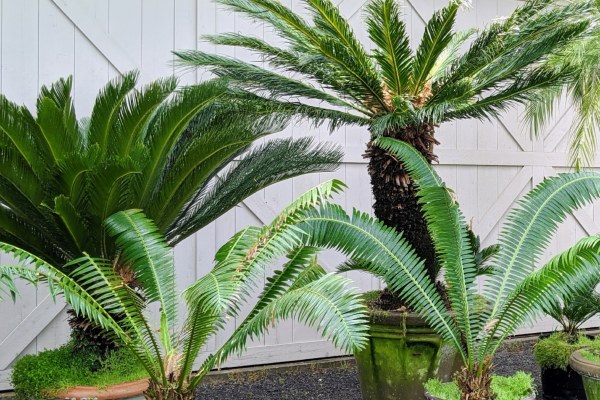Sago palm is a very common houseplant with very slow growth, making it perfect for container gardening. Despite its name and appearance, the sago palm is not related to the palm tree. Instead, it is more related to conifers like pine trees, and other plants with cones. The leaves of a sago palm are shiny, curved, and bundled at the top, like palm leaves. Leaf tips are pointed, and the margins curve downwards. The leaves also emerge directly from the stem of the plant.
Here we will discuss the essential points to grow and maintain a sago palm.
Plant Descriptions
Plant Type: Houseplant, Shrub
Scientific Name: Cycas revoluta
Family: Cycadaceae
Common Name: Sago Palm, King Sago, Cycad, Japanese sago
Native Area: Asia
Toxicity: Toxic to humans and pets
How is sago palm grown?
Sago palm originates from the warm regions of Japan and Southern China. They grow at a very slow rate, generally producing just one new frond each year. Sago palms do best when planted in early spring or late fall. A symmetrical ring of their feather-like foliage has it spreading outward from the top of the plant, and the new leaves emerge in an attractive bronze hue. Sago palms will grow to a larger size when planted directly in the ground rather than planting in containers. While it is slow-growing and can take as long as 50 years to grow up to 10 feet high. Despite the fact, these hardy plants live up to 200 years.
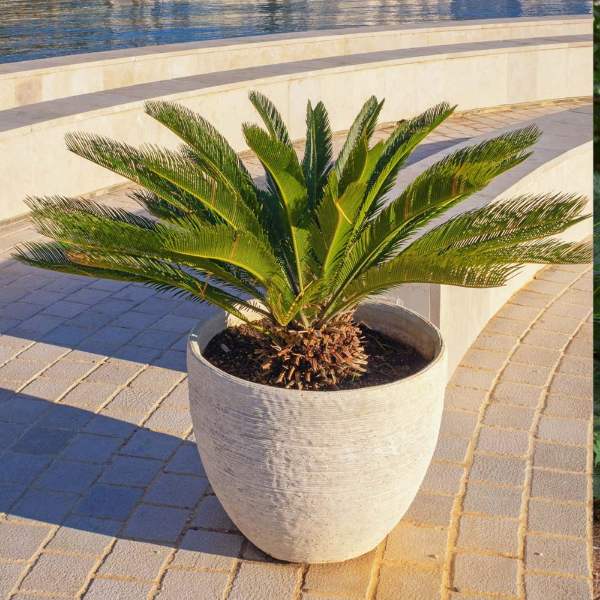
Like most other plants, Sago palms also do not bloom. Rather, they form quite large, cone-like structures on each plant. Each sago palm is either male or female. It takes 15 years or more to form its first cone in the plant. You would need a male and a female plant to transfer pollen from one to the other. The male plants produce the pollen, while the females produce the seeds. That is a part of their cycle of reproduction.
Where and How can sago palm be grown?
Sago palm may be grown indoors or outdoors. For indoor growing, the plant prefers a very bright location with indirect light. Place them in an East or west-facing window where they receive gentle morning or late afternoon sun. However, avoid too much direct afternoon sun, as it can damage the leaves, while too little light can cause the leaves to drop. Additionally, plant sago palms in large containers to move them outside during the warm weather to add interest to your patios or seating areas.
Outdoors, the sago palms prefer a little shade, especially during the warm climate. Place your sago palms in your brightest location, but partially shaded so the leaves won’t burn. Sago palms must be planted outdoors within USDA plant hardiness zones 9 to 11 since they can’t tolerate cold hardiness. They prefer a subtropical or tropical environment. However, with proper care, it is possible to grow sago palms outdoors in northern climates.
Caring Tips for Sago Palm
Light
Sago palms grow in very bright, indirect light. You can avoid the direct sun, which is likely to scorch its leaves. Although sago palms can tolerate some shade, too much can lead to rotting problems. Since sago palms are often grown indoors, you select a bright window where it gets protective partial sunlight. You can also place it outdoors during warm weather, but make sure the container is under shaded sunlight to prevent overheating and damage.
Preparations of Soils
The sago palm grows well in well-draining soil. To ensure good drainage, use a well-draining potting mix that includes inorganic or composted organic matter. The soil should be sandy, highly rich in organic material content, and slightly acid to natural PH. In case it is container-grown, then it should be cultivated on a cactus or palm potting mix for proper growth.
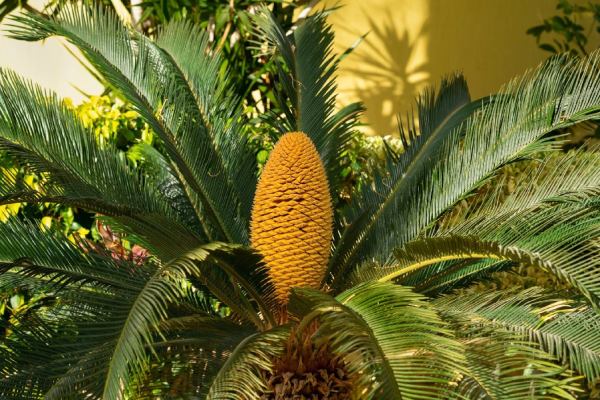
Water
The sago palm tolerates a bit of drought, but it does best with medium to high soil moisture. Water the plant when the top of the soil is dry, but don’t let it get waterlogged. Overwatering can damage the plant. If the soil dries out too often, the tips of the leaves may turn brown. In winter, when growth is slower, waterless.
Temperature and Humidity
Sago palms prefer humid conditions and do well with normal, even indoor, temperatures. They can tolerate cold temperatures for a short while but move them inside if they fall below 50°F while they are outside. Frost can damage leaves, and the temperature below 23°F will most likely kill the plant.
Fertilizer
Feed sago palms slow-release palm fertilizer two to three times a year while in the growing season. You may use the liquid 18-8-18 fertilizer every month by following the instructions on the label. The best time to fertilize is just before it rains because the fertilizer will help in spreading the elements.
Pruning
Sago palms rarely need to be pruned. Typically, fronds are only pruned if they are dead, diseased, or damaged. Even yellow fronds should not be pruned as they continue to deliver nutrients to the plant. Remove fronds only after they have fully turned brown.
Pests and Disease
The sago palm is very much a low-maintenance plant that rarely has problems with pests. However, it may occasionally develop scale insects or spider mites. So, periodically, inspect the plant for these pests. Similarly, you might notice brown spots on the leaves, which are often caused by fungal rot. Apply organic insecticides like insecticidal soap or neem oil first before applying stronger chemicals, and place the plant in areas with good humidity and airflow.
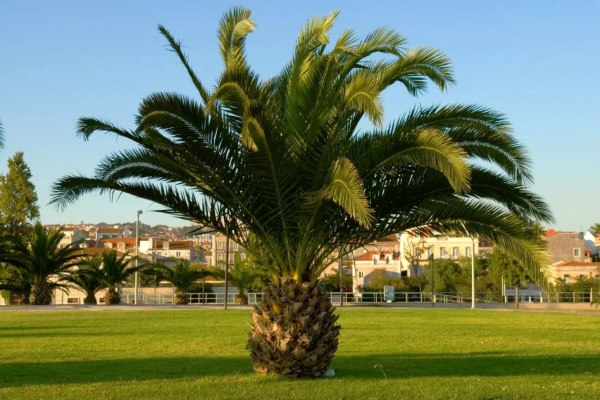
How to propagate sago palm?
Sago Palm can be propagated in two major methods, either by division of plants or seedlings. Both of these methods have their specific procedure and considerations, which are mentioned below:
Propagation by Division
Division is the simplest and easiest way to propagate a sago palm. Just separate the small “pups” or offsets that develop naturally from the base of the main plant. The pups are small plants that form in clumps around the main plant. Here is a step-by-step guide:
Prepare Tools: Have a hand trowel, knife, or scissors to cut the small pups. Sterilize them with alcohol or bleach before use.
Separate Pups: Remove the pups. Some will come off easily with a tug, while others might need the help of a scissors or knife to separate.
Dry the Cut: Let the offset dry in a tray and a shady location for a few days until the cut dries up and forms a callus.
Planting: Take a pot, and fill it with quick-draining potting mix to 2 inches from the rim and below the offset. Place the offset right in the middle of the pot and fill the soil.
Aftercare: Place the pot where there is ample sunshine indoors or if the pot is situated outdoors, put it under a shade. Water the plant enough times until it develops roots after several months. Allow the soil to dry before water is collected.
Propagated by Seedlings
Unlike in a division method, sago plants will take a bit longer in propagation when done through seedlings. Seeds may take months or even years to germinate. With division, you can immediately separate and replant offshoots from a mature plant. Now, below is a step-by-step propagation through seeds:
Harvesting Seeds: Harvest the seed when it turns bright red or orange. Harvesting should be done with gloved hands since the seeds contain some toxic compounds.
Preparation for Planting: Soak the seeds in water for about 24 hours at room temperature to help soften their outer layer. After soaking, remove the husk peeling off a tight coat.
Sow the seeds: Fill a shallow tray with sandy soil and plant the seeds just below the surface, about half an inch deep. Place the tray in a warm location and keep the soil moderately moist.
Aftercare: These seeds can take months to grow. The soil should be kept warm and consistently damp, but not soggy. You can occasionally mist the soil to maintain moisture but avoid making it too wet.
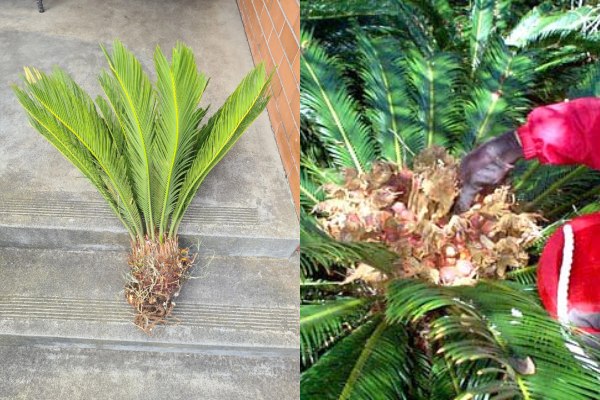
Conclusion
In conclusion, the sago palm is suited for container gardening, indoors and outdoors. This plant grows best in indirect light that is quite bright and requires well-draining soil for efficient growth. With its striking appearance, it brings a touch of tropical elegance to any setting due to its feathery, curved leaves. Although this plant is highly toxic, it is very valuable because it requires little maintenance and is pest-resistant. Watering regularly will complement attention to light and soil conditions in keeping good health. With proper care, the sago palm will not only enhance your space with its unique beauty but will be a stunning and long-lasting presence for years to come.
Also read, Here are 11 Indoor Palm Plants That Give Your House a Tropical Touch!
Frequently Asked Questions
1. What is a sago Palm?
Sago palm, or Cycas revoluta, is a houseplant with feathery, arched leaves that resemble palm fronds. It belongs to a conifer family member and is popular for container gardening.
2. How to care for Sago Palm?
Sago palms need bright, indirect light and well-draining soil. Water them when the top of the soil is nearly dry, but don’t let the soil become soaked. To care for your sago palm, ensure it gets the right light and water, fertilize occasionally, and do minimal pruning.
3. Can Sago palms be planted indoors and outdoors?
Yes, you can grow sago palms both indoors and outdoors. Indoors, it should be placed in a very bright location with indirect light. Outdoors, they do like some partial shade during the hottest parts of the day. Plant them in USDA zones 9 to 11.
4. How do you propagate sago palms?
Sago palms can be propagated by division of the small “pups” or offsets that grow at the base of the plant or by growing from seeds. Division simply involves separating and planting in well-drained soil. While growing from seeds, they need to soak, then remove the husk, then sow in sandy soil. It needs to be kept warm, and slightly wet until it germinates.
5. Are Sago Palms toxic to humans and pets?
Yes, sago palms are very toxic to humans. So handle them carefully and keep them away from children and pets to avoid health issues.
